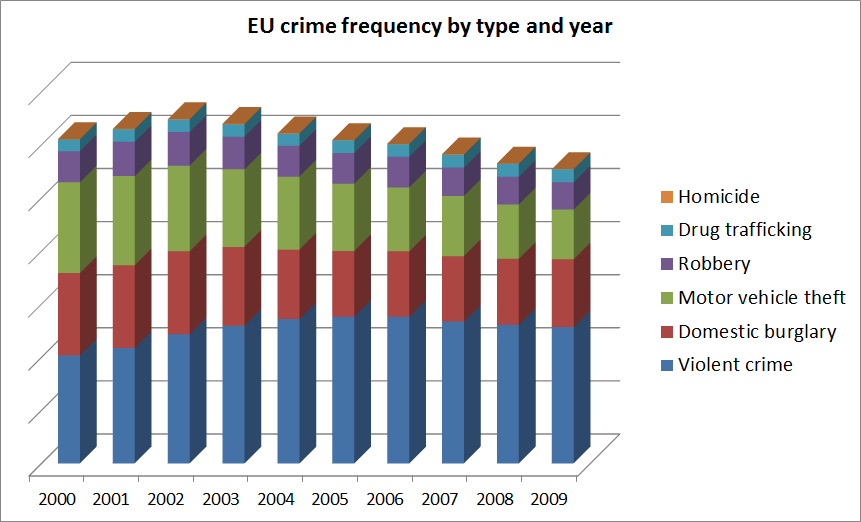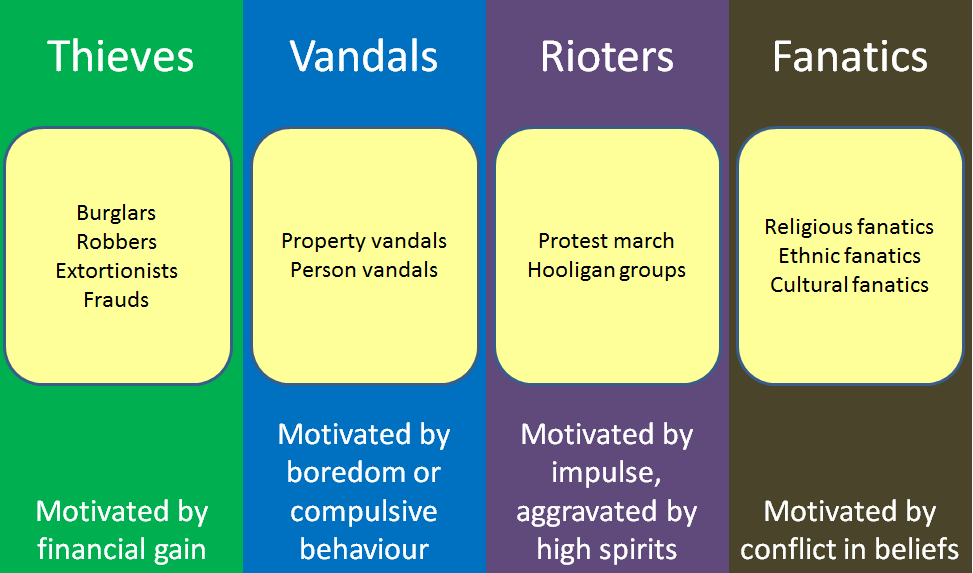Security
Security is the degree or act of protection of persons or assets against risk stemming from the threat type human intent. The distinction between security and safety is explained in differences between safety and security.
Security in the urban environment
Security concerns harm done by persons by wilful action. As these actions are generally prohibited by law, these actions constitute crimes. Security threats can therefore be classified by crime type.
Crime types
A uniform classification of crime that is generally accepted does not exist. In the EU, member countries are obliged to report crime statistics in their country annually. Although countries will use their own systems and classifications, they report their figures according to the classification used for these statistics which distinguishes between the following crime types:
- Homicide[1],
- Drug trafficking[2],
- Robbery[3],
- Motor vehicle theft[4],
- Domestic burglary[5] and
- Violent crime[6].
An indication of the relative size of these crime types and their development through the years is given in the figure below[7].
This classification does not cover all types of crime and does not contain only mutually exclusive classes (robbery is defined as a type of violent crime).
A classification that is developed[8] for use in the urban environment that the types of crime most relevant to urban design, is based on the motivation of perpetrators:
The first category of criminals (thieves) is motivated by financial gain. They can be subdivided into:
- Burglars, who gain wealth by illicitly entering buildings,
- Robbers, who gain wealth by force of threat.
- Extortionists, who gain wealth by use of coercion and
- Frauds, who gain wealth by intentional deception
The second category of criminal (vandals) is motivated by amusement (such as bored youth bothering passers-by) or by compulsive behaviour (such as pyromaniacs). They can be sub divided into:
- Property vandals, who seek damage or destruction of property, and
- Person vandals, who assaults other people physically or mentally.
The third category (rioters) is motivated by impulse, often under group pressure, often in a situation with a high level of excitement or arousal. Two subtypes of rioters are:
- Protesters and
- Hooligans.
The fourth and last category is motivated by conflict in beliefs (fanatics) and tries to impose rules or beliefs upon others by use of coercion. The level of coercion can vary a great deal, ranging from mental abuse to mass killing. Subtypes of fanatics are:
- Religious fanatics, who try to impose religious beliefs or religious rules
- Ethnic fanatics, who coerce specific ethnic groups and
- Cultural fanatics, who try to impose cultural beliefs (for example about animal welfare in the fur industry, globalism or conservationism) upon others.
Footnotes and references
- ↑ Definition: This is defined as intentional killing of a person, including murder, manslaughter, euthanasia and infanticide. Causing death by dangerous driving is excluded, as are abortion and help with suicide. Attempted (uncompleted) homicide is also excluded. The counting unit for homicide is normally the victim (rather than the case).
- ↑ Definition:This is defined as the illegal possession, cultivation, production, supplying, transportation, importing, exporting, financing etc. of drug operations which are not solely in connection with personal use.
- ↑ Robbery is a sub-set of violent crime. It is defined as stealing from a person with force or threat of force, including muggings (bag-snatching) and theft with violence. Pick-pocketing, extortion and blackmailing are generally not included.
- ↑ Motor vehicles include all land vehicles with an engine that run on the road which are used to carry people (including cars, motor cycles, buses, lorries, construction and agricultural vehicles, etc.).
- ↑ Domestic burglary is defined as gaining access to a dwelling by the use of force to steal goods.
- ↑ This includes violence against the person (such as physical assault), robbery (stealing by force or by threat of force), and sexual offences (including rape and sexual assault).
- ↑ derived from Eurostat crime statistics database "Crim_gen"
- ↑ Developed in the Secure haven project and adapted for use in the risk assessment tool and this wiki.

